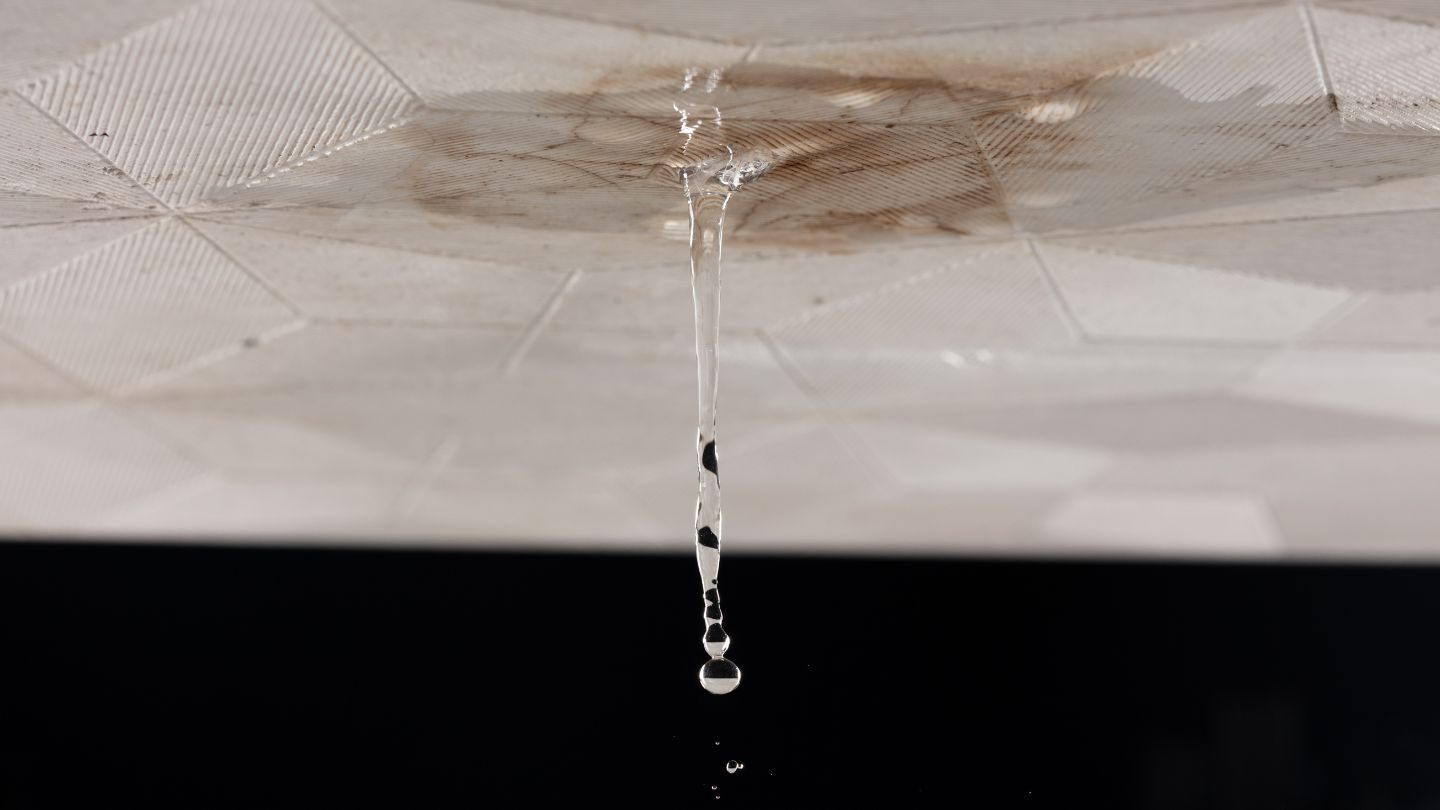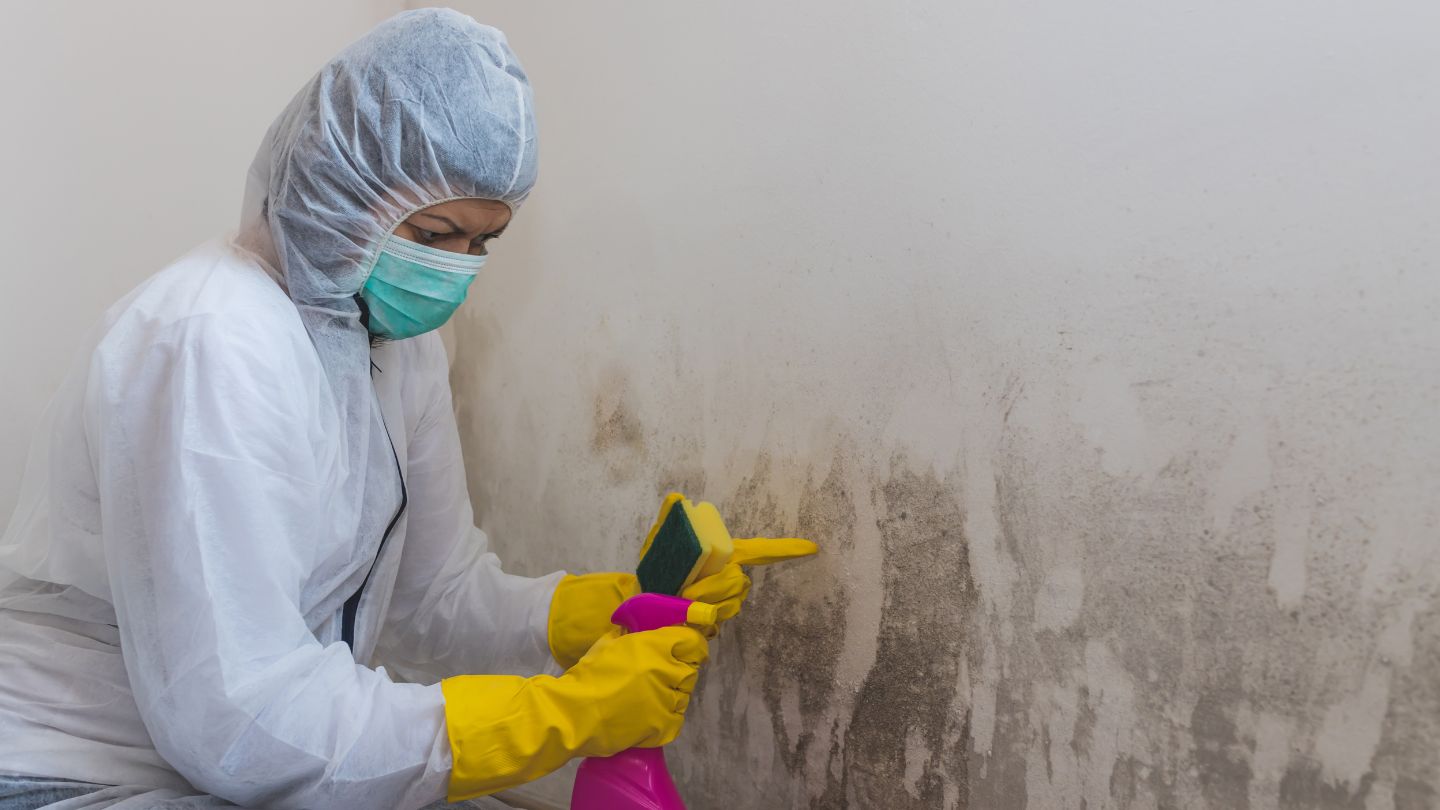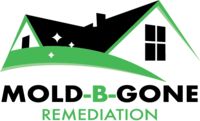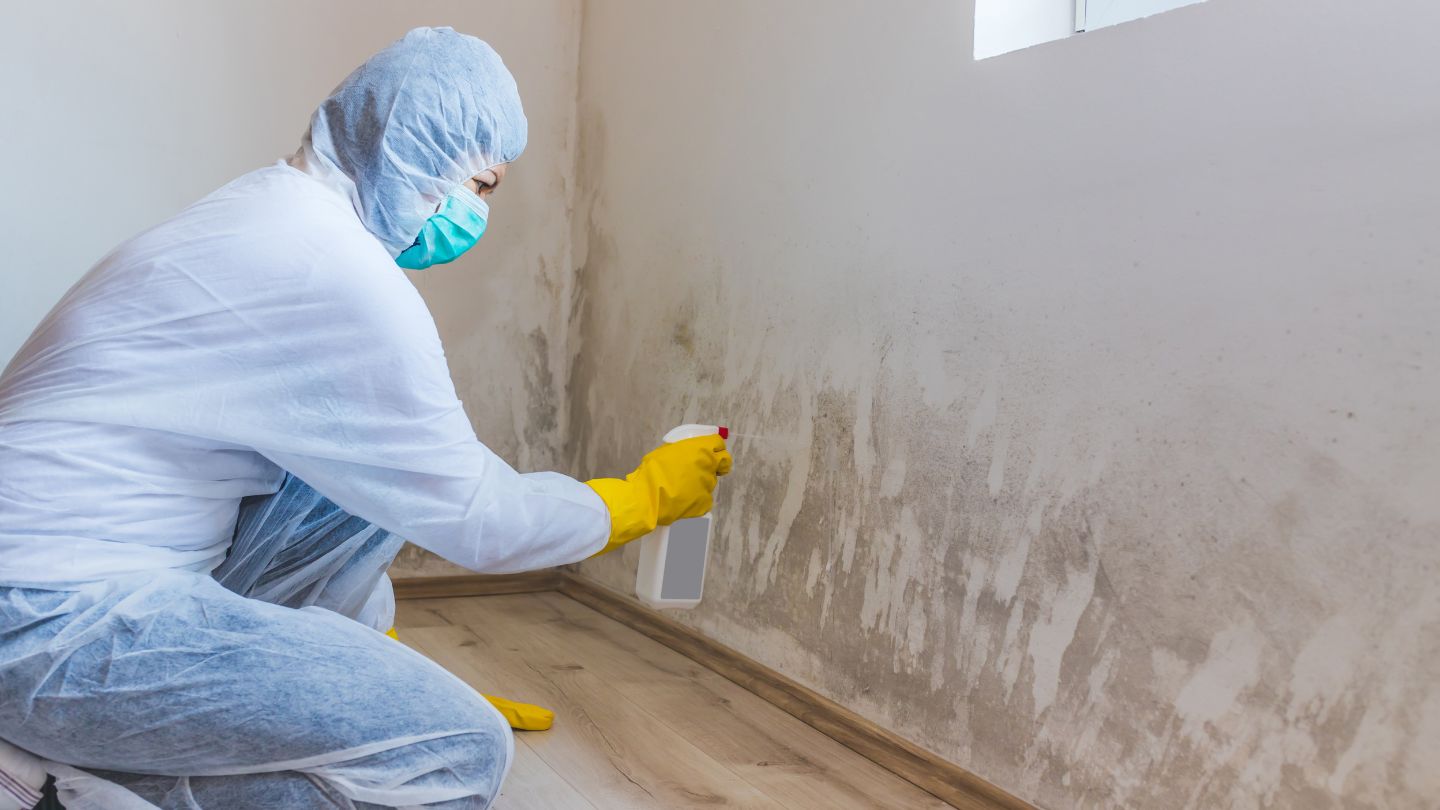The pivotal aspect of successful mold remediation rests on controlling moisture, as managing moisture is crucial for the lasting eradication of mold. Mold flourishes in moist environments. Identifying and handling these sources is a fundamental component for effective removal. This blog examines the importance of moisture control within mold remediation, identifies prevalent sources of dampness, and describes approaches to mitigate them.
Key Takeaways
- Moisture control is essential for effective mold remediation, as mold thrives in damp environments, causing structural damage and health risks.
- Common sources of moisture include leaks, high humidity, and inadequate ventilation, necessitating regular inspections and prompt repairs to mitigate mold growth.
- Implementing strategies such as using dehumidifiers, ensuring proper ventilation, and addressing water damage promptly are critical for preventing mold infestations and maintaining a healthy indoor environment.
The Importance of Moisture Control in Mold Remediation
Managing moisture is essential for successful mold remediation. Ignoring the fundamental issues related to moisture will only result in the temporary eradication of mold. In environments with high dampness, mold can flourish and expand quickly, causing serious harm to the structure of your house while also posing significant health threats to those living there.
Keeping your home’s humidity levels balanced is critical for maintaining its structural soundness and providing a healthy breathing environment. Not only does excess humidity foster the proliferation of mold, but it can also lead to other problems like decayed wood and compromised foundations, which are detrimental to the building’s integrity. Heightened humidity can aggravate allergies and respiratory conditions, underlining the importance of effective management of indoor moisture levels.
Swift identification and resolution of excessive moisture can thwart widespread damage by mold as well as mitigate potential risks associated with it. The financial burden stemming from repairs due to damage caused by molds, along with lowered property values, points out how crucial controlling indoor dampness is not just economically but also for wellness reasons—breaking up continuous cycles within molds’ lifespan prevents their return, ensuring long-lasting safeguards against such infestations, thereby fostering a healthier habitat overall.
Understanding the Relationship Between Moisture and Mold Growth
Moisture, coupled with warmth and a nutrient source, is crucial for the proliferation of mold. Mold spores are ever-present in the air, landing on various surfaces throughout our environment. These spores lie inactive until they encounter moisture. This triggers their germination process and allows them to form into thriving mold colonies. Thus, controlling moisture is imperative.
Elevated levels of indoor humidity can stem from water intrusions or leaks and provide an ideal situation for molds to flourish rapidly. If conditions are right with excess moisture present, it may take as little as 24 to 48 hours for mold to begin growing, highlighting the urgency required in managing such situations effectively by keeping indoor humidity below 60% to stifle its growth.
Effective remediation and preventive measures against mold hinge on diligent moisture control strategies that hinder conducive environments for its expansion. To keep unwelcome fungal growth at bay within interior settings requires regulating humidity levels. This includes deploying dehumidifiers strategically to extract superfluous dampness while promoting adequate ventilation practices and swiftly rectifying any leakage issues, followed by comprehensive drying procedures.
Common Sources of Excess Moisture in Homes
Common sources of moisture in homes include leaks, flooding, high humidity, and condensation. These factors play a significant role in elevating indoor humidity levels. Typical causes like plumbing leaks, roof breaches, and foundation fissures can result in substantial moisture accumulation if they are not promptly resolved. Poor ventilation may also contribute to retaining excess indoor air moisture content, which can increase the risk of mold proliferation due to unresolved underlying humidity issues.
Activities such as cooking and bathing add to the overall indoor moistness, particularly noticeable within kitchens and bathrooms where proper airflow is crucial. Without it, these zones that generate considerable amounts of dampness become hotspots for visible mold manifestation, commonly appearing around bathroom surfaces or kitchen fixtures behind devices prone to water damage.
Mold tends to thrive in environments with persistent high humidity, including areas like crawlspaces, requiring vigilance through routine checks on roofing integrity, plumbing systems, efficient ventilation routes, alongside focused monitoring over inherently humid locations, all aimed at curbing potential occurrences wherein pervasive moisture challenges manifest into full-blown detectable mold infestations.
Health Risks Associated with Excessive Moisture and Mold Exposure
Exposure to mold can lead to serious respiratory difficulties, especially for individuals with pre-existing medical conditions. When mold is present, it releases spores and volatile organic compounds into the air, which may result in breathing problems and allergic responses. Symptoms associated with exposure to mold include a continuous cough, sneezing fits, headaches, and, potentially, cognitive issues in more extreme cases.
It’s noteworthy that approximately 28 percent of people are significantly prone to health complications from mold exposure. This highlights the critical nature of managing moisture levels effectively as a means of inhibiting mold growth. Breathing in these spores could exacerbate conditions like asthma or contribute to chronic health concerns over time. Consequently, maintaining lower humidity levels plays an essential role both in mitigating symptoms related to mold toxicity and emphasizing the need for robust moisture control alongside resolving any existing humidity challenges.
Maintaining ideal humidity within your living space is key not only for preventing unwanted growth of molds but also for bolstering indoor air quality and promoting overall wellness. By swiftly addressing any issues concerning moisture buildup, you lay out protective measures against potential risks linked with coming into contact with molds while fostering an environment conducive to healthier living standards.
Effective Moisture Control Strategies

Maintaining control over moisture levels is crucial for mold prevention and promoting a healthy living space. To inhibit mold growth, it’s important to:
- Address water-related issues promptly.
- Keep environments consistently dry.
- Assure adequate airflow within the home.
- Routinely perform inspections and upkeep to detect and remedy any emerging moisture problems before they worsen.
For effective humidity management, employing dehumidifiers and waterproofing methods is advisable. Appropriate insulation helps sustain uniform indoor temperatures while minimizing condensation, which contributes to moisture control efforts—thereby creating conditions less hospitable for mold proliferation and reinforcing long-term defenses against mold establishment.
Regular monitoring combined with the use of devices designed for humidity regulation that maintain levels below 60% can greatly diminish the likelihood of encountering a mold infestation problem. In subsequent discussions, we will delve into particular tactics such as utilizing dehumidifiers, ensuring sufficient air circulation, and taking immediate action on water damage.
Read more: Essential Mold Inspection After Water Damage: Why It’s Crucial?
Using Dehumidifiers and Humidity Control Devices
Maintaining the correct levels of indoor humidity is vital in the battle against mold, and dehumidifiers play a key role in this process by ensuring effective moisture control. By choosing a dehumidifier that fits the size of your space adequately, you can keep indoor humidity below 55% to help prevent mold growth.
Ensuring that humidity levels are kept at an optimum range not only stops the advancement of mold but also plays a critical role in preventing it from taking hold initially. The consistent use of dehumidifiers and similar devices designed for humidity management helps draw excess water vapor out of your living spaces, thereby diminishing the likelihood of encountering a mold infestation. This proactive strategy substantially improves air quality within indoor environments, promoting better health conditions at home or work.
Read more: Understanding How Mold Grows in Different Humidity and Temperature Conditions
Ensuring Proper Ventilation
Ensuring proper ventilation is key to lowering indoor humidity and eliminating surplus moisture, which in turn mitigates the risk of mold proliferation. When ventilation is insufficient, moisture accumulates, providing a perfect breeding ground for mold. This issue is especially prevalent in areas prone to high levels of dampness, like bathrooms and basements. Hence, it’s critical to maintain adequate airflow in these spaces.
Promoting good air flow assists with the swift drying of wet surfaces, which helps prevent mold formation. To improve air exchange and manage humidity effectively, it’s important that ventilation systems operate correctly alongside using exhaust fans strategically placed in regions known for higher moisture content.
One can also diminish indoor humidity naturally by opening windows and doors to facilitate cross-ventilation.
Fixing Leaks and Addressing Water Damage Promptly
Leaks and water damage can cause structural issues and create an environment for mold growth if not addressed. Quickly addressing leaks protects structural integrity and prevents mold establishment. Immediate action on water damage prevents mold growth and preserves your home’s health.
Prompt detection and fixing of leaks prevent moisture buildup and subsequent mold infestations. Regular inspections of plumbing, roofs, and other leak-prone areas help identify issues early and mitigate mold problems. Swift action prevents mold damage and maintains a healthy living space.
Read more: How Fast Can Mold Grow After Water Damage?
Professional Mold Remediation Process

Professional mold removal services, including both professional and DIY approaches to mold remediation, begin with a detailed evaluation during the initial meeting. This step involves assessing the severity of the mold issue and crafting an appropriate plan for remediation by pinpointing sources of moisture as well as regions affected by mold growth.
During the phase where removing mold is essential, implementing containment methods is crucial. These strategies prevent spores from dispersing and involve quarantining impacted zones along with adopting effective techniques for isolation. The subsequent stages include disposing of materials infested with molds, followed by thorough cleaning and disinfecting surfaces to eradicate remaining spores. Future episodes of mold proliferation can be avoided by sealing treated areas with antimicrobial encapsulants.
Utilizing proper tools such as HEPA air scrubbers alongside dehumidifiers is vital for successful remediation outcomes while safeguarding health standards. Professional companies specializing in this field deliver reliable service assurance, coupled with minimizing potential health hazards via adept practices reinforced by professional equipment usage. Engaging a trusted company like Mold-B-Gone guarantees that you receive comprehensive solutions geared towards effective results in combating fungal contamination issues.
Read more: Understanding What Is Mold Remediation Process
Initial Mold Inspection and Moisture Assessment
Initial mold inspection and moisture assessment are critical steps in the remediation process. Moisture meters and humidity measuring tools assess moisture levels and identify mold growth extent. A thorough inspection determines the scale of mold contamination and locates affected regions.
Conducting a mold inspection is recommended, especially before major renovations or if there’s a history of water damage. If homeowners detect mold growth due to significant water damage or areas over 10 square feet, professional help is advised. This initial assessment sets the stage for a targeted remediation plan.
Containment and Removal of Mold-Infested Materials
Isolating areas impacted by mold through the use of plastic sheeting and barriers is crucial to avoid additional contamination during containment procedures. It’s imperative for the successful execution of professional mold remediation that materials tainted with mold, such as drywall or carpeting, are disposed of correctly.
Ensuring that surfaces are meticulously sanitized and disinfected after the removal of materials plagued by mold is fundamental in eliminating remaining spores. This step confirms that there will be no resurgence of the mold, maintaining a safe habitat for those residing within. Professional services dedicated to removing mold conduct these actions proficiently to assure effective remediation results.
Application of Antimicrobial Encapsulants
It is essential to use antimicrobial encapsulants as a protective coating on surfaces following the removal and cleaning of materials infested with mold. This serves as an important barrier, hindering the ability of mold spores to take hold and spread.
Utilizing antimicrobial substances can effectively destroy any lingering mold spores, substantially diminishing the chance for future growth of mold. By taking this measure, lasting control over mold is achieved, contributing to the upkeep of an environment free from mold.
Regular Maintenance and Inspections
Frequent upkeep and thorough checks can reveal concealed moisture problems before they develop into significant mold issues. Assessing moisture levels and performing consistent inspections facilitates the early detection of mold indicators, enabling swift intervention. Homeowners are aided in thwarting mold formation by adhering to a comprehensive maintenance plan that mandates ongoing scrutiny and control over possible sources of dampness.
Essential preventive measures include maintaining proper humidity levels, ensuring good air flow, and carrying out meticulous examinations. By putting these strategies into action, you safeguard your home against mold infestation while preserving its structural soundness. Routine checks are instrumental in promptly spotting leaks and other related concerns, thus enabling immediate fixes that contribute to enduring protection against mold growth.
Implementing Preventive Measures
Preventive measures are crucial for effective mold control and remediation in homes. Here are some strategies to consider.
- Use moisture-resistant materials to significantly decrease mold risk.
- Install moisture-resistant drywall and flooring in high-humidity areas to help prevent mold growth.
- Install exhaust fans in high-moisture areas like bathrooms and kitchens to significantly reduce humidity levels and prevent mold.
By implementing these measures, you can create a healthier living environment and minimize the risk of mold growth.
Preventive measures also include adequate ventilation and proper humidity control strategies. By implementing these strategies, you can create an environment that discourages mold growth and ensures long-term mold prevention. Taking proactive steps to manage moisture and humidity will help maintain a healthy living space and discourage mold growth.
Monitoring Indoor Humidity Levels
It is crucial to keep an eye on indoor humidity levels as a strategy for mold prevention. By frequently measuring the humidity and keeping it under 60%, one can substantially reduce the likelihood of mold forming. Employing devices such as moisture meters and systems that control humidity allows you to monitor indoor moisture conditions closely and make appropriate modifications when needed.
Upholding ideal levels of indoor humidity serves not just to inhibit mold, but also enhances air quality within your living space. Tackling issues related to excess moisture and guaranteeing adequate airflow are key steps towards fostering a healthier, more secure home environment. Diligent observation of these humidity metrics is part of a vigilant approach in safeguarding against the onset of mold, thereby ensuring your residence remains clear of its growth.
Read more: How Climate Affects Growth of Mold: At What Temperature and Humidity Does Mold Grow?
Summary
In summary, effective mold remediation hinges on diligent moisture control. Understanding the connection between moisture and mold growth, identifying common sources of excess moisture, and recognizing the health risks associated with mold exposure equips homeowners to take proactive steps. Employing comprehensive moisture management techniques—including the use of dehumidifiers, ensuring proper ventilation, and promptly addressing water damage—is essential to maintaining a mold-free environment and safeguarding both property and health.
For those seeking expert assistance, Mold-B-Gone offers trusted mold remediation in Atlanta with a thorough approach from inspection to complete mold cleanup. Additionally, we offer crawl space encapsulation, duct cleaning, eviction cleanouts, and whole-house room sanitizing services. Contact us today to protect your home and family by addressing moisture issues effectively and ensuring long-term mold prevention.
Frequently Asked Questions
When is it recommended to have a mold inspection?
It is advisable to have a mold inspection prior to any major renovations, particularly if there is a known history of water damage.
What is the certification status of the staff at Mold-B-Gone Remediation?
The personnel at Mold-B-Gone Remediation are certified professionals in the fields of Mold Inspection and Remediation.
What is included in the mold remediation process?
The mold remediation process includes mold containment, physical removal of contaminants, and the application of antimicrobial encapsulants to prevent future growth.
This comprehensive approach ensures a safe and thorough resolution of mold issues.
What are some effective methods to reduce or eliminate mold inside a home?
To effectively reduce or eliminate mold inside your home, regularly inspect for leaks, ensure proper ventilation in moisture-producing areas, use exhaust fans, and maintain humidity levels below 60%.
These practices can significantly mitigate mold growth.
What is the success rate of Mold-B-Gone Remediation in mold removal services?
Mold-B-Gone Remediation boasts a flawless 100% clean rate for their mold removal services, indicating a high level of effectiveness in their remediation efforts.
This exemplary performance assures clients of successful mold elimination.

